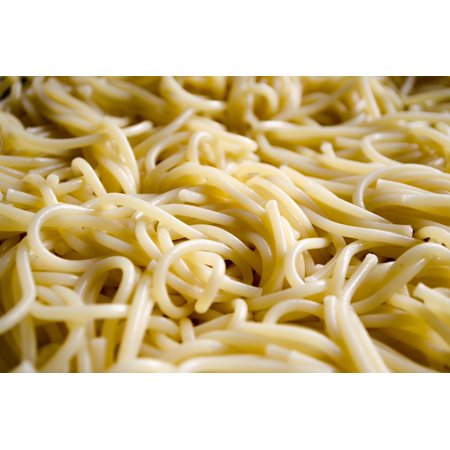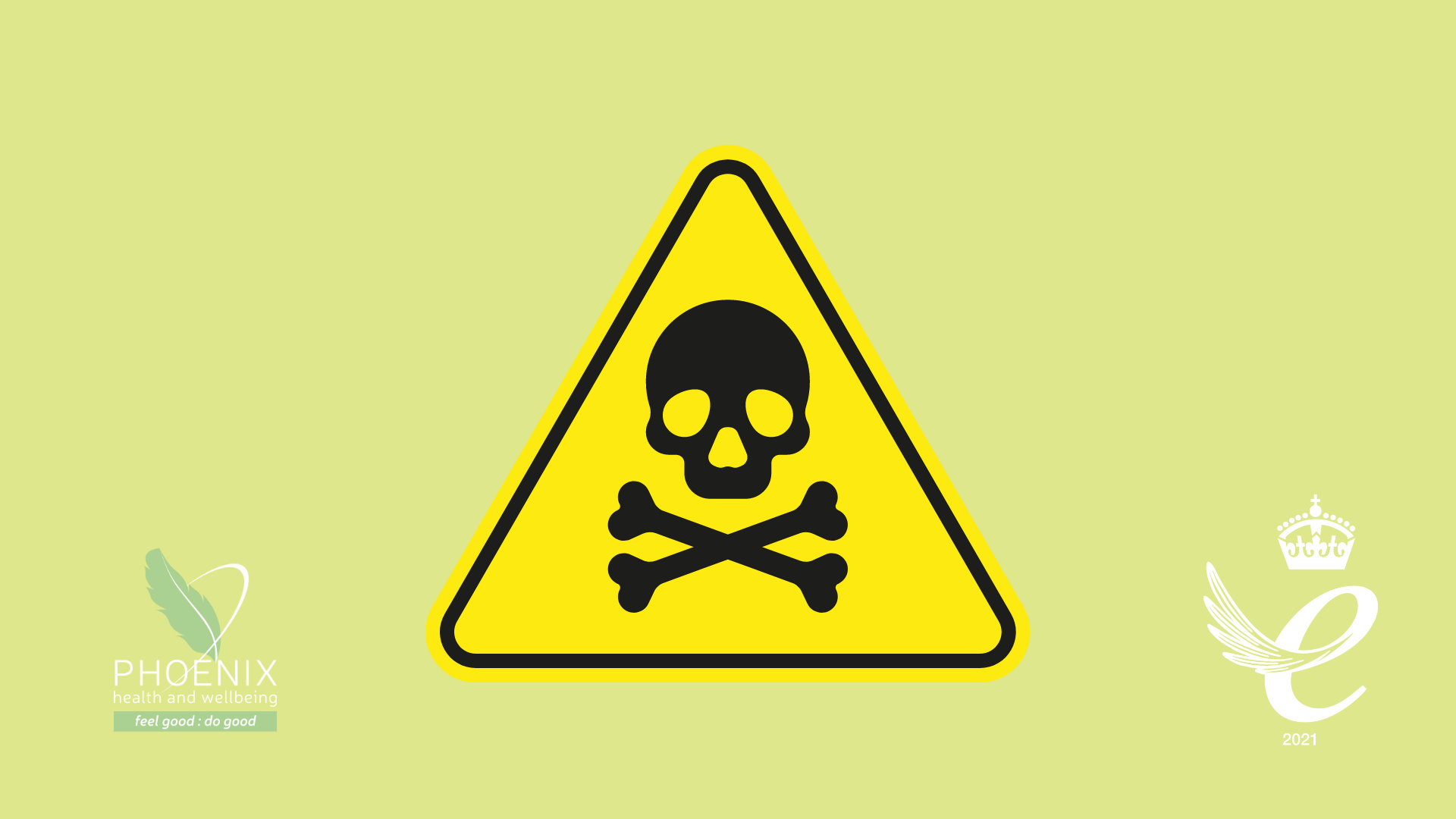
Beware of Nature’s Trap: Foods Containing Natural Toxins
We often focus on the benefits of various foods, highlighting their nutritional value and health-promoting properties. However, it’s essential to recognise that not all foods are created equal. Some contain natural toxins that can pose risks to human health if consumed in large quantities or improperly prepared. While these toxins are typically found in trace amounts and are harmless when consumed in moderation, understanding their presence can help us make informed dietary choices. Let’s look at some foods that contain natural toxins and should be approached with caution.
The humble potato
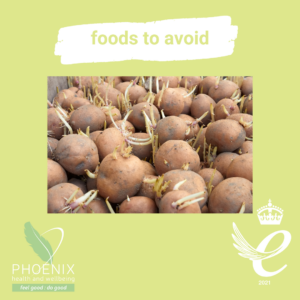
Potatoes are part of the nightshade family and in certain conditions they can become toxic.
Potatoes that have been stored for a long time or incorrectly can start to sprout white shoots. These look harmless enough but they contain toxic compounds, glycoalkaloids. Glycoalkaloids cause irritation to your gastrointestinal tract – we all know that’s not going to end well!
Also beware any green parts on potatoes. Do not eat them. They contain another toxin, solanine which can cause nausea, dizziness and vomiting. Cut off any green parts of potatoes and put them in the compost!
Kidney Beans
Kidney beans are a nutritious source of protein and fiber, but they also contain lectins, particularly phytohaemagglutinin (PHA). Lectins are proteins that can interfere with digestive processes and cause gastrointestinal discomfort. Eating undercooked or raw kidney beans can lead to lectin poisoning, characterized by symptoms such as nausea, vomiting, and diarrhea. To neutralize lectins and other toxins, kidney beans should be soaked and properly cooked before consumption (Oliveira et al., 2015). I have personal experience of this – it’s very unpleasant!
Almonds
Almonds are renowned for their nutritional value, containing healthy fats, protein, and essential nutrients. However, bitter almonds, a variety of almonds, contain amygdalin, a compound that can release cyanide when ingested. While bitter almonds are not typically consumed raw due to their bitter taste, they can pose a risk if mistakenly eaten in large quantities. Therefore, it’s crucial to stick to sweet almonds, which are safe for consumption, especially in culinary preparations (Li et al., 2019).
Rhubarb
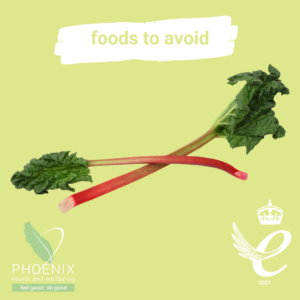
Rhubarb is a tart and tangy vegetable often used in pies, jams, and desserts. The stalks are safe to eat. The leaves, on the other hand, contain oxalic acid and anthraquinone glycosides, which are be toxic if ingested in large quantities. Symptoms of rhubarb leaf poisoning include nausea, vomiting, abdominal pain, and kidney damage. To avoid toxicity, it’s best to discard rhubarb leaves and only consume the stalks (Sun et al., 2019).
Apple pips
Apple pips or seeds contain cyanide which is highly toxic. Luckily the seeds are covered in a protective coating that keeps the cyanide from dispersing unless the seeds are ground up. Even so it’s best to be cautious and Sicard the core of the apples that you eat or cook with.
To wrap up!
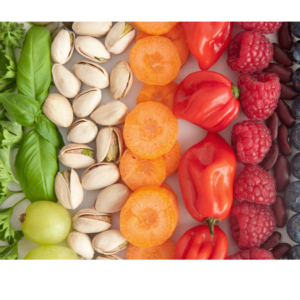 While the foods mentioned above contain natural toxins, it’s important to emphasise that they can be safely consumed when properly processed and prepared. Additionally, the risks associated with these foods are relatively low when consumed in moderation as part of a varied and balanced diet. However, individuals with specific dietary restrictions or health conditions should exercise caution and consult with healthcare professionals if unsure about certain foods.
While the foods mentioned above contain natural toxins, it’s important to emphasise that they can be safely consumed when properly processed and prepared. Additionally, the risks associated with these foods are relatively low when consumed in moderation as part of a varied and balanced diet. However, individuals with specific dietary restrictions or health conditions should exercise caution and consult with healthcare professionals if unsure about certain foods.
So while nature offers a bounty of nutritious foods, it also harbours hidden dangers in the form of natural toxins. By understanding the presence of these toxins and taking appropriate precautions, individuals can continue to enjoy a diverse and wholesome diet while minimising potential health risks.
If you want wider advice about foods that may be harmful visit the World Health Organisation website
References:
– Rosling, H., Rosling, O., & Rosling, R. (2019). Cassava: An appraisal of its phytochemistry and its implications for human health. Biomedicine & Pharmacotherapy, 116, 109006.
– Oliveira, T. T., Campos, K. K. D., Cerqueira, L. B., Ferreira, P. A. D. T., França, T. C. C., Rosa, C. D. O. B., … & Oliveira, T. S. (2015). Biochemical, nutritional and toxicological aspects of lectins in the diet: a review. Food Chemistry, 181, 296-309.
– Li, S., Zhang, X., Li, H., Hu, C., Shi, S., Jiang, H., … & Luo, J. (2019). Comparative transcriptome analysis reveals gene expression differences between two varieties of Prunus dulcis Mill. in response to hydrogen cyanide. BMC Plant Biology, 19(1), 1-14.
– Chau, R., Kalaitzis, J. A., & Neilan, B. A. (2019). On the origins and biosynthesis of tetrodotoxin. Aquatic Toxicology, 210, 145-151.
– Sun, Y. C., Li, F. L., Tong, Q. Y., & Bi, J. F. (2019). Research progress on the toxic components and their toxicology in Rheum palmatum L. Pharmaceutical Biology,
___________________________________________________________________________
Phoenix Health & Wellbeing is a Charity and social enterprise based in West Yorkshire. By using our services you are helping us to continue with our charitable work. We use the proceeds of these sessions to subsidise treatments for people who have chronic health issues and low incomes. Roughly £4 of every £10 spent with us will go to help others. Find out more about our charitable work here and use these links to discover our massage, counselling, acupuncture and employee assistance services
Health insurance and treatments at Phoenix
If you have private health insurance, you may be able to claim for some or all of the cost of your massage therapy. Check your policy.
Opening times:
Monday to Thursday from 10:00 to 20:00
Friday and Saturday from 10:00 to 16:00


